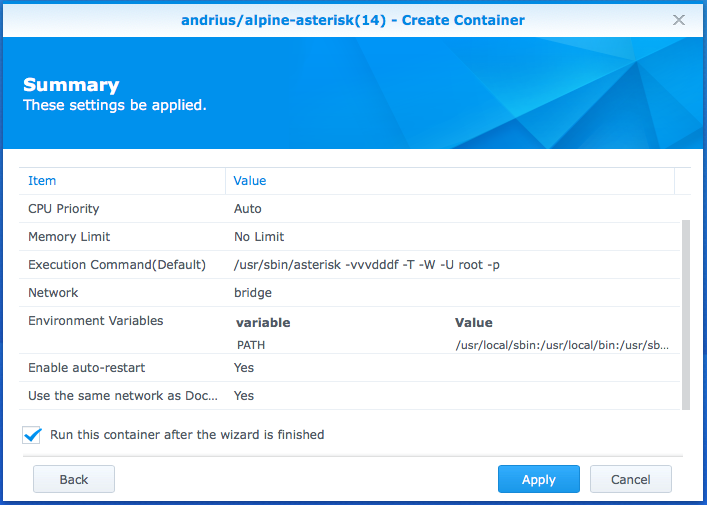Centralize data storage and backup, streamline file collaboration, optimize video management, and secure network deployment to facilitate data management. Enhanced user experience for DSM first-time installation and Synology Account related service setup (e.g. Added information and usage tips about security, notification, and other recommended settings in DSM Help. Added the ability to back up DSM system configuration to a connected Synology Account. We have a NAS by Synology - DS1511+ that has Asterisk installed as a package. We have a SIP account from our provider. Asterisk version is 1.8.13.1, Asterisk GUI-version: 2.1.0-rc1 Cisco VoIP phones updated to the latest version available. What do I need Setup the SIP account on Asterisk server Setup the user extension Make and receive calls.
My Synology DS712+
I was using my Synology DS712+ with DX-513 for a long time and was still running with DSM version 5.xx because I had running Asterisk also running on it. I wanted to upgrade it to DSM 6.xx but Asterisk was not supported as Package any more.
And then I heard that you can run docker containers on it with DSM 6.xx So I did copy the configuration files from the NAS to a safe place in OneDrive and upgraded the NAS to DSM 6.xx.


I have a Dutch Provider called XS4ALL and with them, you can set up a SIP Trunk.
How to setup Docker on DSM 6.2.2
Docker is not available on all models so look at the references. Check this first before you begin with following the rest of the blog.
Open de Package Center and type in the search ‘Docker’ and you will see the Docker software with the option to install it when it’s available on your model op Synology.
When the installation is ready you can open Docker from the ‘Package Center’ or the ‘Main Menu’
You see here that I already installed a docker container, but when you install it for the first time there be no docker container.

How to install the Asterisk image from the Registry
Synology Dsm Manual
I used the Docker image from Andrius that is well known and updated regularly.
Open from the still open ‘Package Center’ or ‘Mainmenu’ Docker
So now you go to the tab ‘Registry’ and in the search, you type Asterisk and hit enter, now you will see several Asterisk images, I have used the one from Andrius/Asterisk. Select this one and click on download.
Now at the tab ‘Image’, you see that the image is ready and that you can create a container from it by double click on it. Here you can give it a name and then click on the ‘Advanced Settings’ button.
At the ‘Advanced Settings’, you can select the ‘Auto-Start’ option and also the ‘Create shortcut on desktop’. What the last option will do is create a shortcut on the desktop where you can go fast to this container.
At the network tab, you have to select the option ‘Use the same network as the docker host’ When you don’t do this then you have to create a bridge and all the network rules and port mappings.
When you clicked apply at step 7 you will have the screen where you see your docker container is running.
When you select the docker container that you have just created you can click on the button ‘Details’ and will get an overview of how many CPU and Memory your container is using.
In the tab ‘log’ you can see what Asterisk is doing, this is very handy when you are troubleshooting and fast want to look at what is happening.
Here you see that I have selected to create a shortcut on the desktop.
Installing Asterisk On Synology Dsm 5
How to configure Asterisk with SSH client or from the ‘Terminal’ tab of your docker container.

Because I already had my Asterisk configured and Running on DSM 5.xx I copied the information from the following files over to the docker container that we just created.
/etc/asterisk/extensions.conf
/etc/asterisk/sip.conf
References
Installing Asterisk On Synology Dsm
Well, I was playing with Synology (which seems decently stable). It is a pretty lousy Plex server mainly I think because the processor is slow and it can’t transcode. On the other hand, it is incredibly fast. Running with 1GB ethernet, I regularly get 100MBps which is pretty amazing. Faster than the local hard disk of my old iMac (which does about 80MBps).
So trying other things, I’m trying to see about using Asterisk and getting rid of Comcast Voice eventually and also a Mail Server, so I don’t have to worry about privacy issues (Gmail and the like).
Installing Asterisk is pretty easy. Just download the package, but then it takes you to a logon screen and asks for user name and password. Lots of google searches don’t show anything, but the inspired guess was to try admin and password. No go. Then saw the default for Synology DSM itself is admin and no password. This worked!
